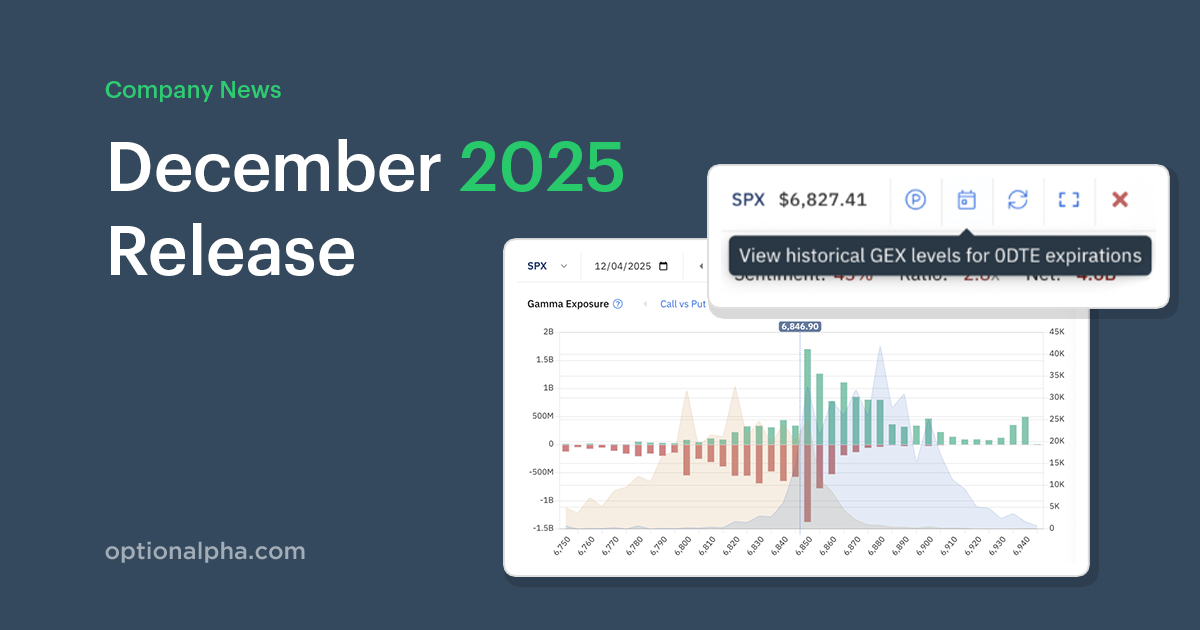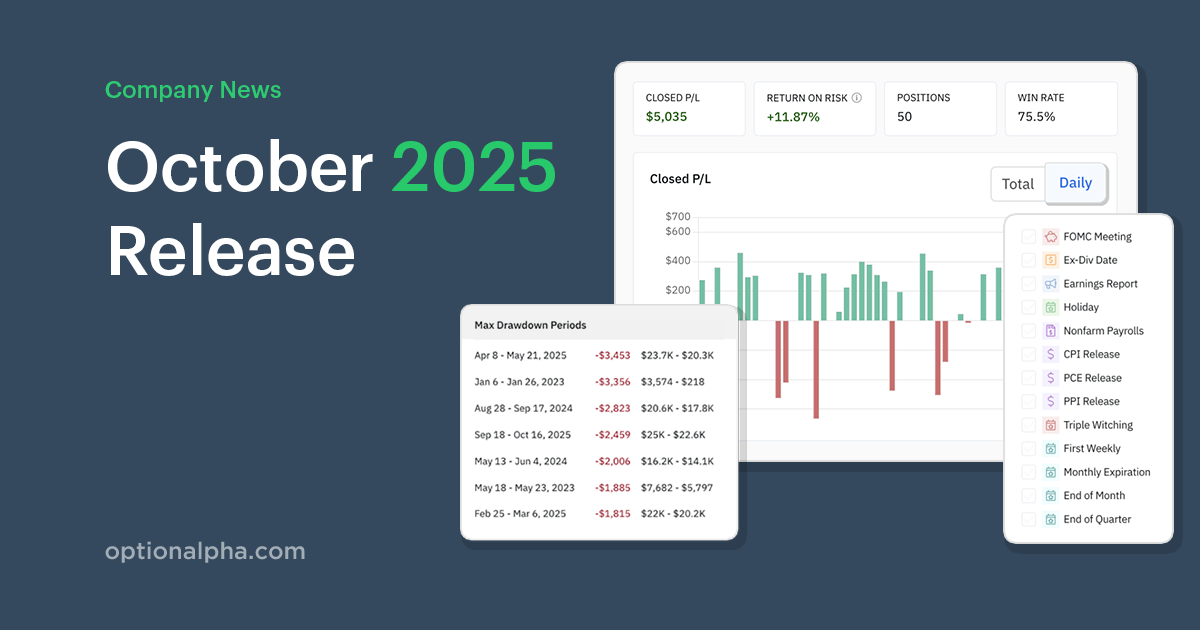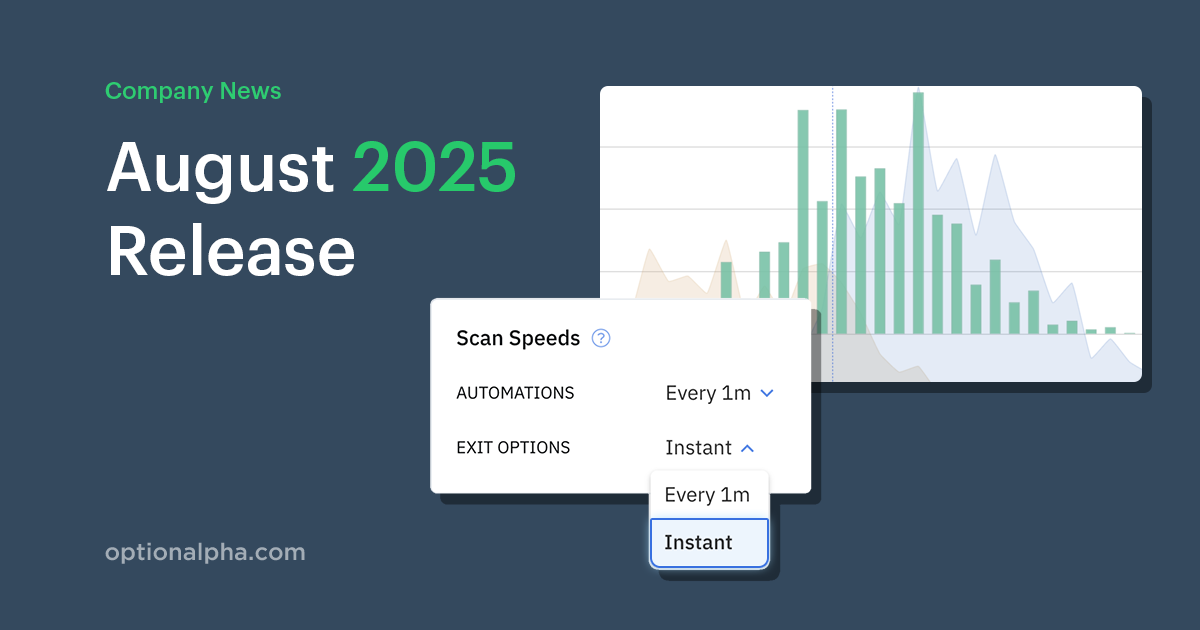In previous Research Insights blogs, we defined the bid-ask spread, explored typical spread behavior, and walked through multiple case studies. If you haven’t read those posts, make sure to start there so you are up-to-date!
Today, we go a step further. Not only are bid-ask spreads unique across different underlyings, but the spreads you see on your screen for multi-leg positions are unique at the contract level.
Every contract has individual market forces influencing the bid and ask price you see, and those contract-specific factors have a meaningful impact on the pricing of your positions.
Does the depth of your research show awareness of the individual contract influences on the pricing of your positions? Would your answer be different for a non-trading life decision?
When purchasing a new vehicle, does your research stop at comparing manufacturers, or do you also explore vehicle types and models? Each vehicle type (e.g. SUV vs. Car) and each model have unique features relevant to your decision. Choosing Honda or any other manufacturer does not get you to the purchase decision finish line. Why should your trading be different?
Every position has the potential for unique anomalies, often in the bid-ask spread, and properly understanding the potential for variability adds a necessary layer to your trading approach. In the last post, we laid a foundation, showing what bid-ask spreads should resemble.
Today, we’ll zero in on the role of market makers, identify some contract anomalies, and understand what this reality means for your trading.
Who Controls the Bid-Ask Spread?
If you’re new to financial markets, you likely don’t fully understand who or what creates the bid-ask spread and directly impacts it. Not to worry, let’s build on content from previous articles to clarify.
Bid-ask spreads are heavily influenced by market makers who act as a “go-between” for buyers and sellers of financial instruments, producing more efficient markets. Market makers stand ready to buy or sell securities at any time. They offer to buy securities at one price (bid) and to sell at another price (ask), forming a bid-ask spread.
The spread between the bid and ask price is the market makers’ compensation for providing liquidity and bearing risk. What would cause market makers to widen or narrow this spread?
If the bid-ask spread exists to compensate market makers for the risk of major moves in securities, then it is logical that the spread will widen when market volatility increases. Higher volatility produces a higher probability that the market maker will hold a position that moves against them. Because of that added risk, the spread widens.
The number of market participants also influences spreads. As more individuals enter a particular market, liquidity increases, and the bid-ask spread tends to tighten. During periods of low liquidity or high volatility, the bid-ask spread tends to widen.
To intuitively understand the role of market participants and liquidity, think about the difference between purchasing a loaf of bread and a house. The level of price stability for each item is directly tied to the number of market participants. The house price is more variable and unpredictable simply because there are not as many buyers competing for the same item. A loaf of bread has countless potential buyers, all subconsciously creating efficient pricing through their purchase decisions.
Back to financial markets, if there is a low trading volume in a particular market or contract, you can expect more volatile pricing and wider spreads simply because there are not as many interested parties, creating less efficient pricing. These facts about market makers and market participants paint the picture of how market pricing and bid-ask spread movements typically function. They are a key contributor to the asset personality mentioned in the previous blog post.
However, the typical is not always reality when you drill down to the contract level. Let’s look at a real-world example of contract-specific bid-ask spread anomalies.
SPY At-The-Money Case Study
What does the interchange of volatility, liquidity, market participants, and the bid-ask spread look like?
For this study, we collected tick-by-tick data for the September monthly expiration of SPY on Tuesday, 1 June 2021. The data collected ranges from 9:45 AM-3:45 PM EST, avoiding the typical bid-ask volatility present during price discovery at the open and close.
Unlike the TLT case study, we did not construct a sample trade. Instead, the goal was to analyze the data for pricing anomalies in near-the-money contracts. The trading range for SPY on June 1 is shown in Figure 1.
.png)
Figure 2 below shows the bid and ask prices for a 415 SPY call with a September expiration. This contract was slightly out-of-the-money throughout the trading day and was selected for analysis because of its high trading volume due to its proximity to SPY’s spot price.
The focal point of this visualization is obvious. The outlying data point at 10 AM is a $3.16 bid-ask spread. With that magnitude, you’d expect the average spread on June 1 for this particular SPY contract to be skewed high. That would be incorrect; the average spread for the remainder of the day after 10 AM was only 6.0 cents, with the day’s overall average (including 10 AM) at 6.2 cents.
This high-magnitude event barely touches the average contract spread. Why?

Take a look at the top panel in Figure 3. This is the same 415 call as in Figure 2 but drilled down to the two-minute interval around 10 AM. The spread anomaly mentioned above lasts for only 10 seconds, or ~7 ticks, mainly driven by a drop in the bid price. For reference, the 415 call had 16,945 ticks during our defined collection window. This event was so short-lived that you would remain ignorant of the extreme volatility unless you explored individual tick data.
The story is similar for other calls surrounding SPY’s $419 closing price. The 425 and 420 call shown below, along with all strikes between them (not pictured), show jumpy bid-ask spreads at 10 AM. In-the-money, at-the-money, and out-of-the-money call contracts all show bid-ask spread volatility at 10 AM.

Is there a similar story on the put side?
The trend in call-side contracts was not present on the put side. The put contract data shows a different, arguably more interesting, trend.
Figure 4 displays four slightly in-the-money puts that remained in-the-money throughout the trading day. These put contracts exhibit the same 10 AM anomaly, except for the 426 strike. Spreads generally widen, but not on the 426 put contract.
At a high level, a trader would see minimal differences in the average spread between the 426 and 427 puts (26 cents and 30 cents, respectively), but this tick-by-tick data shows otherwise.
Remember what we said earlier about individual market forces? Here’s your example. While the traditional explanations of market makers and underlying volume may have had some impact, they were clearly not the only factors present in this anomaly.

Let’s continue with the car shopping analogy. These SPY contracts, calls and puts, are the same vehicle manufacturer (underlying), and some are even the same vehicle type (call vs. put), but they are not the same model (contract). There are unique, contractual market forces at play, causing phenomena like the widening in the 425 and 427 puts but not the 426 put. Sometimes contracts move together like on the call-side, but that correlation does not change the unique nature of each contract.
So, what’s causing this volatility? Is this a result of large, delayed institutional orders? Possibly. Is this a significant player balancing their books on the first of the month? Could be. Is this all based on differences in volume? Doubtful, but maybe.
Think back on our discussion of market makers and spread width; those forces do not adequately explain these anomalies. Spreads do widen based on volume and volatility, but those factors do not justify a less than 10-second, multi-dollar spread increase. If that is insufficient, remember that June 1 was also a relatively quiet trading day for SPY. The ETF traded in a $3.46 range, compared with an average true range of $4.20.
Answering these questions requires much more than a single day’s picture. We’ve been digging through terabytes of tick-by-tick data collected so far, identifying and analyzing anomalies similar to those highlighted above.
All of this analysis is done to better equip you in developing a more complete trading system. A clearer picture of what is happening under the hood provides a deeper understanding of your trading strategies’ potential strengths and weaknesses.
Speaking of your strategies, let's talk about why leveraging this knowledge is impactful for you as a trader.
Key Takeaways
Whether you realize it or not, your strategies have rules behind them. Maybe you have a clearly defined list of entry and exit criteria, placing trades only within those bounds, or you might have basic mental guidelines that you tend to follow. In either case, your system has rules and trading criteria.
Underpinning a trader’s rules are assumptions about how markets operate: you expect certain liquidity from specific securities, and perhaps you expect contract X to correlate with contract Y. Broadly, these assumptions often hold. But, as we saw in the case above, a zoomed-in view shows a trader the potential short-term volatility behind his or her assumptions.
Are you prepared for those extreme, rule-breaking events?
Is it likely that you will open or close a position at one of these extreme-spread prices? No, a prudent trader has rules and systems in place to prevent those anomalies from impacting the broader strategy. However, these market events are real, and this volatility produces threats and opportunities depending on your level of understanding. We want to provide you with actionable insights into the markets you trade, turning potential threats into tradable opportunities.
Our goal is to offer information that enhances your strategies and supports your trading success. Check back as we dive deeper into these anomalies and what they mean for your trading life!

.png)



.png)









